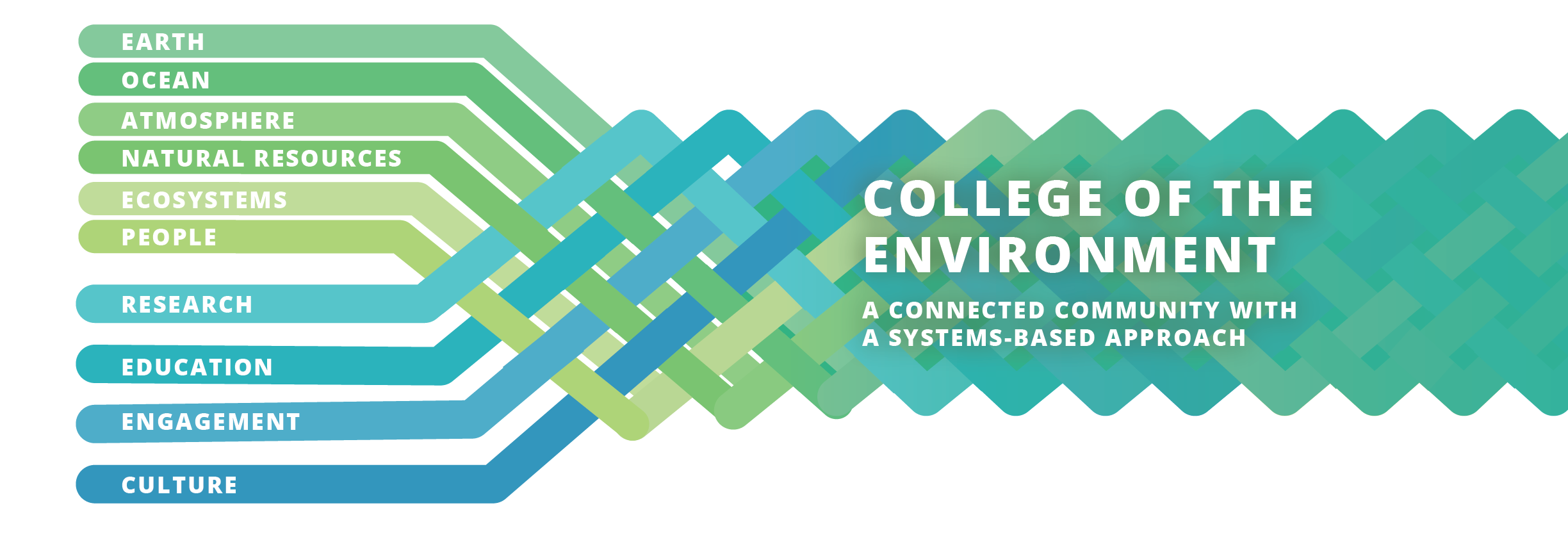Download the 2024-2029 Strategic Plan
Printable copies of the Strategic Plan and the Strategic Plan One-pager.
Implementation Plan and Committee
The Implementation Committee has been assembled to outline an action plan to move forward the overarching goals of the Strategic Plan.
We’re pleased to share the UW College of the Environment 2024-2029 Strategic Plan. Please join us in thanking our Strategic Planning Committee for their hard work, and the College community for thoughtful feedback. If you have any questions or comments, please email envdean@uw.edu.
On this page
- Message from the Dean
- Purpose of the Strategic Plan
- Vision, Mission, Values
- Goals Supporting the Strategic Plan
- Strategies for Success
- From Planning to Impact
- Members of the Strategic Planning Committee
- Implementation Plan and Committee
Message from the Dean
It is difficult to overstate the importance of the College of the Environment’s work at this moment in human history. Whether we seek to understand the fundamental processes of our planet and environment, manage natural resources sustainably, equitably and ethically, devise mitigation and adaptation strategies in response to climate change, or build policy and other solutions in partnership with communities, government or business, our contributions have never been more vital or urgent.
The College is unlike any other in the world, with unparalleled scope and depth in diverse subject areas including atmospheric and climate science, oceanography, Earth sciences, ecology, fishery sciences and marine biology, forest sciences, and environmental social sciences and policy. Our students, faculty, staff and postdoctoral scholars are some of the foremost on the planet, enabling us to serve as a global hub for innovative research and excellence in teaching.
The College was established in 2008, inspired by the vision that by collocating these fields of research and education, the University of Washington (UW) could further cement itself as a leader in addressing our planet’s most pressing challenges. Since then, as these challenges have grown in their existential importance to humanity, the need for this approach has become even more apparent.
Throughout the years, our primary strength has been cutting-edge, transformative research across the environmental sciences. The collaborative, creative, interdisciplinary spirit of our community has allowed the College to develop solutions to big problems in partnership with colleagues across the UW and beyond. This is our key differentiator, and the reason that the UW is already widely acknowledged as a world leader in these fields. As the UW seeks to be the No. 1 university in the world as measured by impact, the College has a vital role to play.
To amplify our impact we will come together in new ways to take greater advantage of our extraordinary breadth and depth of scholarship, teaching and service. We will further integrate work across our many programs by weaving together our strengths, from fundamental science to community partnerships, to create a seamless path to impact. We recognize that to realize this vision we must further our systems-based approach and continue to move beyond traditional academic silos, rewarding teamwork and collaboration with our partners within and outside the College, and integrate ways of knowing historically underrepresented in the academy.
This strategic plan will serve as a North Star guiding us toward that vision. It articulates who we are, what we do and the value we bring to individuals, communities and society globally. It will be used to elevate our profile in Washington State nationally and worldwide, and help us secure the resources we need to do our best work and deliver the knowledge and solutions the world requires.

Maya Tolstoy
Maggie Walker Dean of the College of the Environment
Purpose of the Strategic Plan
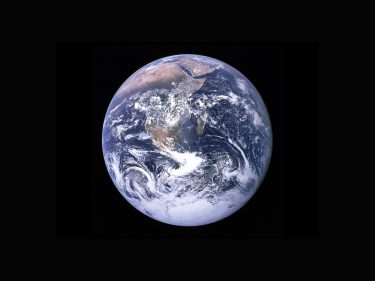
The UW College of the Environment is exceptional by virtue of containing more breadth and depth than any environmentally focused college in the United States. In addition, the College is nestled within one of the country’s most successful and well-regarded research institutions, itself part of a vibrant and forward-looking city. The result is a truly unique blend of internal and community expertise and opportunity. We are large enough to address the most compelling of today’s environmental questions and educational needs, yet nimble enough to respond to an ever-changing world.
Our work is more urgently needed than ever. The College generates transformative, cutting-edge environmental knowledge and trains the next generation of scholars and practitioners. Facing a rapidly changing climate and accelerating environmental degradation, we seek to elevate and transform our work to better serve the people of Washington and the world. To fully understand the big questions we seek to answer and problems we seek to solve, we require both robust disciplinary work and systems-based thinking enabled by working across disciplines and in external partnerships (e.g. community organizations, tribes, government, business and academia).
Through this strategic planning process, we have identified opportunities for our College community to become more than the sum of our parts, and through that collective, interactive effort increase our impact in the face of unprecedented need for our expertise. By emphasizing and empowering teamwork, and valuing contributions of all members of our teams, we will strengthen our community and our impact. This plan aims to guide our efforts broadly for the next five years (2024-2029), supporting all members of the College in acting boldly to take intellectual risks, while remaining grounded in our Vision, Mission and Values. We view this plan as a living document, and will regularly check in as a community to hold ourselves accountable and be nimble in response to our rapidly changing world.
The College of the Environment brings together students, researchers and community members to drive forward our understanding of environmental systems and how they connect to the well-being of all.
Vision, Mission, and Values
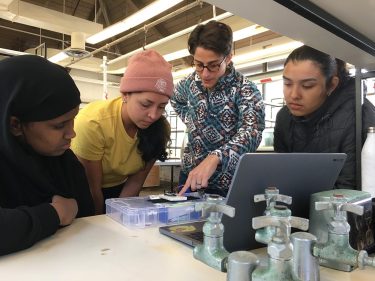
Vision – what we want to achieve
We support a just and sustainable future where discovery-driven and applied research informs, educates and supports a thriving, resilient Earth and all its inhabitants.
Mission – what we do and who we serve
We seek rigorous understanding of the natural world and humans’ place within it to advance knowledge and build equitable solutions to complex climate and environmental problems, and to educate and train future generations to meet these challenges on our ever-changing planet.
Values – principles we want to uphold in all our work and interactions
- Collaboration – Generating and improving ideas, actions and outcomes by engaging individuals, partners and communities in novel ways to achieve goals together that none of us could alone.
- Collegiality – Ensuring a culture of mutual respect, appreciation and trust that supports meaningful interaction and collaboration among students, faculty, staff, postdoctoral scholars and those in communities beyond the University.
- Inclusion – Building and supporting a community of richly varied personal backgrounds, experiences and viewpoints essential for effective inquiry, learning and growth, and including ways of knowing historically underrepresented in the academy.
- Integrity – Demonstrating ethical behavior and accountability in all of our pursuits and interactions.
- Stewardship – Taking individual and collective responsibility for the natural world and the societies within it, and pursuing actions to ensure their resilience and continued health.
- Discovery – Building new knowledge and understanding, and elevating curiosity and life-long learning.
* In this document we use the terms disciplinary, interdisciplinary, transdisciplinary and systems-based research as things we do and seek to do. These terms are defined below.
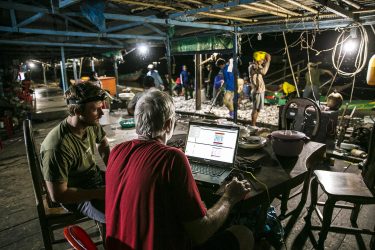
Disciplinary: Disciplinary refers to work within a particular subdivision of scholarship or specialized subfield of study.
Interdisciplinary: Interdisciplinary refers to the integration of two or more academic disciplines to address a research question or problem. In interdisciplinary research, scholars from different disciplines work together to create new insights, theories or methods that would not be possible using a single disciplinary approach. For example, a project that combines ecology, psychology and public health to study the health effects of lack of access to nature is an interdisciplinary project.
Transdisciplinary: Transdisciplinary refers to the integration of multiple disciplines and other types of knowledge (such as local knowledge or practical knowledge) in a collaborative and participatory manner to address complex problems. Transdisciplinary research aims to create new forms of knowledge that are relevant to real-world problems and that involve interested parties in the research process. For example, a project that combines biology, economics, anthropology and local knowledge to develop a sustainable agriculture system is a transdisciplinary project.
Systems-based: Systems research recognizes that a system (e.g. climate, environmental, natural hazards or other complex environmental system) is a function of its components, and that each component interacts, interconnects, interrelates and/or influences each other.
Goals Supporting the Strategic Plan
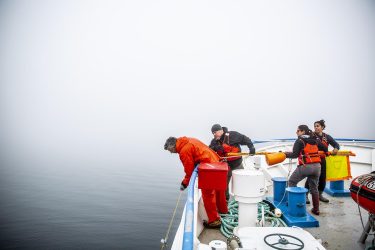
In service to our mission, we have a deep and abiding commitment to understand Earth’s components, develop equitable solutions and educate future generations. Faculty, students, staff and postdoctoral scholars of the College of the Environment strive to pursue work across four core pillars — research, education, engagement and culture — at local-to-global scales, and in service of our shared planet. At our core, we continually develop and fortify the foundations of knowledge required for sustainability in a rapidly changing world.
Systems do not function in isolation, and we have the opportunity to bridge our disciplinary strengths to more fully embrace inter- and transdisciplinary research. Similarly, our College community does not function in isolation, so we will build bridges and strengthen our cohesiveness as a College, internally and externally.
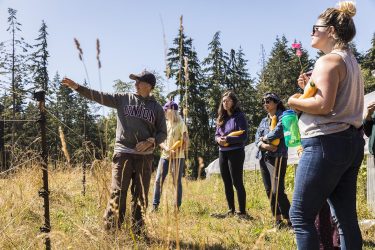
Goal 1: Build a stronger, more connected community to enhance environmental knowledge and impact.
Goal 2: Catalyze understanding of and solutions to environmental challenges through a systems-based approach
To ensure our success, we must have strategies to reach these two overarching goals over the next five years. A robust implementation planning process will follow the strategic planning process. Some initial strategies are described below, but these will be adapted and strengthened as we learn from our progress.
Strategies for Success
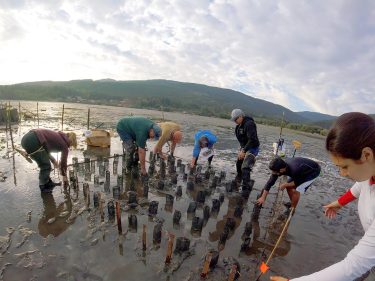
Goal 1: Build a stronger, more connected community to enhance environmental knowledge and impact
We will strengthen our community to enhance knowledge of each other’s expertise, create new relationships and seed collaborations across the College, the University and the wider world.
Strategy 1: We will develop an inclusive, supportive and collaborative culture as we leverage expertise across all four pillars, from deep disciplinary work to interdisciplinary, transdisciplinary and systems-based approaches.
Even as the reputation and accomplishments of our core units have grown, we will be stronger by increasing knowledge and trust across the College and establishing clearly defined diversity, equity, inclusion, justice and accessibility (DEIJA) goals. All of these conditions are necessary for the College to amplify and advance our work. To pursue this strategy, we will:
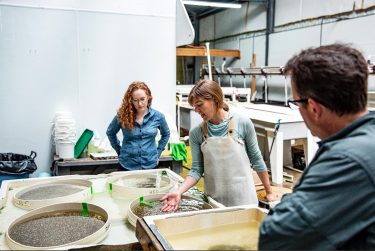
- Enhance knowledge of each other’s work, build trust and seed cross-College collaborations through programming that builds connections among our core units, encourage partnerships and collaboration across units, and create a shared understanding of the topics our College community considers to be of the highest priority.
- Streamline administrative processes and expand recognition, support and professional development for faculty, staff and students, with an emphasis on those involved in systems-based research, DEIJA, external community engagement and environmental literacy work.
- Ensure promotion criteria recognize and reward excellence in addressing environmental challenges through partnerships and community-engaged scholarship.
- Advance just practices that realize the College’s commitment to DEIJA principles to build, support and nurture a more diverse community of faculty, staff, students and postdoctoral scholars, including implementation of the recommendations of the College’s DEI Task Force Report.
- Increase opportunities for members of the College to physically sit within other units through joint appointments, encouraging committee memberships across units and collaborative space to strengthen the ties between units.
Strategy 2: We will strengthen and expand environmental literacy at UW and in society at large.

We will deliver top-tier education, learning and outreach that enhances systems-based thinking and leadership. This will cultivate widespread understanding of the natural world and our place in it, inspire environmental service and develop future capacity for leadership, discovery and action. To pursue this strategy, we will:
- Include sustainability, climate change, community-engaged research and environmental justice within our curricula, both as central course topics and as lenses through which to view disciplinary content and skill-set learning.
- Increase access to hands-on, experiential education for undergraduate majors and minors regardless of income or ableness, including research opportunities, career mentoring, internships and field trips.
- Increase our connections with K-12 educators, community college and peer institutions.
- Support engagement of College faculty, staff and students in pedagogical research and innovation, including ways of knowing historically underrepresented in the academy.
- Create tracks of existing and new courses, and appropriate credentials for professionals in the private, public and nonprofit sectors who wish to further their environmental literacy.
Strategy 3: We will develop a shared College identity and tell our story locally, nationally and globally to grow our visibility, recognition, reputation and public trust in the College and the University.
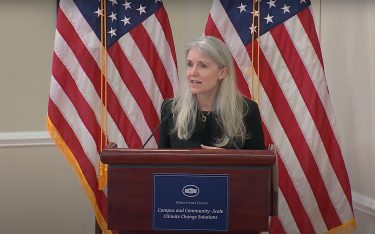
Students, researchers and our partners will benefit from a strong connection to the units across the College to amplify our collective strengths and demonstrate that we are more than the sum of our parts. To pursue this strategy, we will:
- Develop and share messaging and visual materials differentiating the College of the Environment from other similar institutions and emphasizing our value for prospective and current students, the University, external partners and the state and people of Washington and beyond.
- Seek opportunities and capitalize on new pathways to disseminate our research and build new partnerships, including where our work is in service to society.
- Enhance our reputation as a widely known and trusted source of accurate, understandable and timely information about the environment for the public, policymakers and other key community partners and affected parties.
- Improve internal communications to increase awareness of opportunities, events and achievements, and our shared identity.
Goal 2: Catalyze Understanding of and solutions to environmental challenges through a systems-based approach.
We will build on our exceptional disciplinary breadth to catalyze more systems-based approaches in our work to understand the full complexity of environmental processes and to create effective solutions to the world’s collective environmental challenges.
Strategy 4: We will engage the exceptional breadth and depth of expertise in the College community to continuously identify emerging systems-level themes as focal points for our work, and build frameworks to support them.

This focus on systems-level perspectives will be nimble and responsive to new knowledge and rapidly changing local and global environmental challenges. We will empower and support students, faculty and staff to understand systems-based approaches to be effective change makers in the world. To pursue this strategy, we will:
- Establish an equitable process that engages the entire College community to identify and define systems-level themes to pursue the four pillars of our work.
- Identify projects that can focus on systems-level research and will be responsive to the needs of the public.
- Invest in and provide infrastructure to nurture ideas that lead to bold, ambitious grant-writing and new philanthropic opportunities.
- Identify and address hurdles faced by faculty, staff and students wishing to include systems-focused approaches into their work.
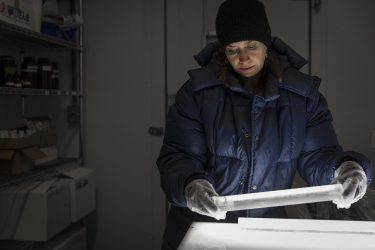
Strategy 5: We will nurture and sustain mutually enriching partnerships and interdisciplinary and transdisciplinary collaborations beyond the College, to develop new knowledge and tools that lead to just and equitable environmental solutions.
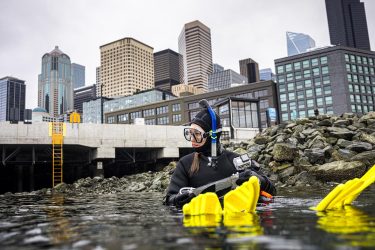
The College of the Environment will lead by building on its extensive network of longstanding, trusted partners and world-class academic programs, both internal and external to the University of Washington. We will enhance and encourage existing partnerships, and increase the capacity of the College community to successfully create innovative new ones. To pursue this strategy, we will:
- Enhance existing and foster new partnerships by strengthening the College’s support for co-developing our work with external partners, and identify gaps to fill with new structures to serve our partners.
- Develop robust professional development pathways for faculty, staff and students that are critical in our transdisciplinary partnership work.
- Collaborate with partners inside and outside of UW to develop our capacities in “implementation science” — collaborative work that develops and tests different approaches that may increase successful implementation and learning about environmental solutions.
From Planning to Impact
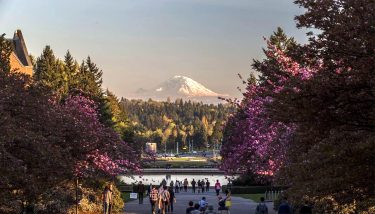
To meet the urgency of the moment and deliver the impact we seek, it is essential that the College of the Environment works to transform into something that is truly greater than the sum of its parts. We will strengthen our internal community and build bridges with the many external partners with whom we work and serve. This work will not only enable us to amplify our contributions to a world facing the existential threat of climate change and numerous environmental challenges, but will also contribute to the College being a truly joyful and productive place in which to learn, innovate and collaborate.
The Dean’s Office is committed to investing resources immediately to build structures to support these goals at multiple levels, as well as actively seeking additional resources to grow this work. While some of the strategies are already being implemented, work will begin immediately to develop an implementation plan that will help turn our goals into action.
This also must be a living document, one we will need to further develop and implement, and regularly evaluate our progress against to hold ourselves accountable. If we do so together, in community, we will have an enormous impact on research, education, community and culture within and beyond our walls, and work to make our world a better, safer place for all.
The University of Washington, home to the College of the Environment and a spectacular location from which to lead in environmental research, teaching and service.
Members of the Strategic Planning Committee
- Russell Callender, Director, Washington Sea Grant (Co-Chair)
- Shuyi Chen, Associate Dean Research and Professor, Department of Atmospheric and Climate Science (Co-Chair)
- Rick Keil, Director and Professor, School of Oceanography (Co-Chair)
- Peter Abe, Director, Seattle MESA (K-12 program)
- Christopher M. Anderson, Professor, School of Aquatic and Fishery Sciences
- Dan Brown, Director and Professor, School of Environmental & Forest Sciences
- Brendan Carter, Research Scientist, Cooperative Institute for Climate, Ocean & Ecosystem Studies
- Cailey Condit, Assistant Professor, Department of Earth & Space Sciences
- Stephanie Harrington, Associate Dean for Administration, College of the Environment
- Gordon Holtgrieve, Associate Professor, School of Aquatic & Fishery Sciences and Chair of College Council
- Sunny Jardine, Associate Professor, School of Marine & Environmental Affairs
- Sally Jewell, Former Secretary of Interior, Obama Administration and Chair, Earthlab Advisory Council
- Kristin Privitera-Johnson, Doctoral Student, School of Aquatic & Fishery Sciences
- Joe Kobayashi, Academic Services Assistant Director, Marine Biology Program
- Ben Packard, Executive Director, EarthLab
- Kristi Straus, Associate Teaching Professor, Program on the Environment
- Maya Tolstoy, Maggie Walker Dean and Professor, College of the Environment
- Braeden Van Deynze, Natural Resource Economist at Washington Department of Fish and Wildlife and former Postdoc, School of Marine and Environmental Affairs
- Maggie Walker, Member, UW Foundation Board and longtime College supporter
- Lillian Williamson, Undergraduate Student, Program on the Environment
Assistance to the Steering Committee provided by John Braunstein and Belinda Li of AKA Strategy, and Julie Van Tosh.
Implementation plan and committee
The Strategic Plan Implementation Committee has been assembled to outline an action plan, consistent with our mission, vision and values, to move forward the two overarching goals of the Strategic Plan. This work should draw on the strategies for success outlined in the plan, but not be limited by them. The committee is small so it can remain nimble, but is also charged with assembling initial and ongoing feedback from the broader College community about implementing the goals. The Dean’s Office is initially committing $500,000 over two years to seed cross-college collaborations, along with additional resources to assist with community-building events and grant-writing support. The committee should develop a plan to best utilize these resources.
The implementation plan should be a living document, and will be evaluated every year to determine how effective the recommendations have been. As such the dean has encouraged the committee to identify a few ideas that can be acted upon swiftly before completing their final report, particularly around building a stronger, more connected community. The committee will also consider evaluation metrics for demonstrating whether or not the implementation work is achieving its goals. The final plan should be delivered not later than the end of the winter quarter 2024.
Implementation committee members
- Corey Garza, Professor, Aquatic and Fishery Sciences, and Associate Dean for Diversity, Equity, and Inclusion (co-chair)
- Rick Keil, Professor and Director, Oceanography (co-chair)
- Renata Bura, Professor, Environmental and Forest Sciences
- Christina R. Owen, Director, UW Botanic Gardens
- Kristi Straus, Teaching Professor, Program on the Environment
- Trent Vonich, Graduate Student, Atmospheric and Climate Science

